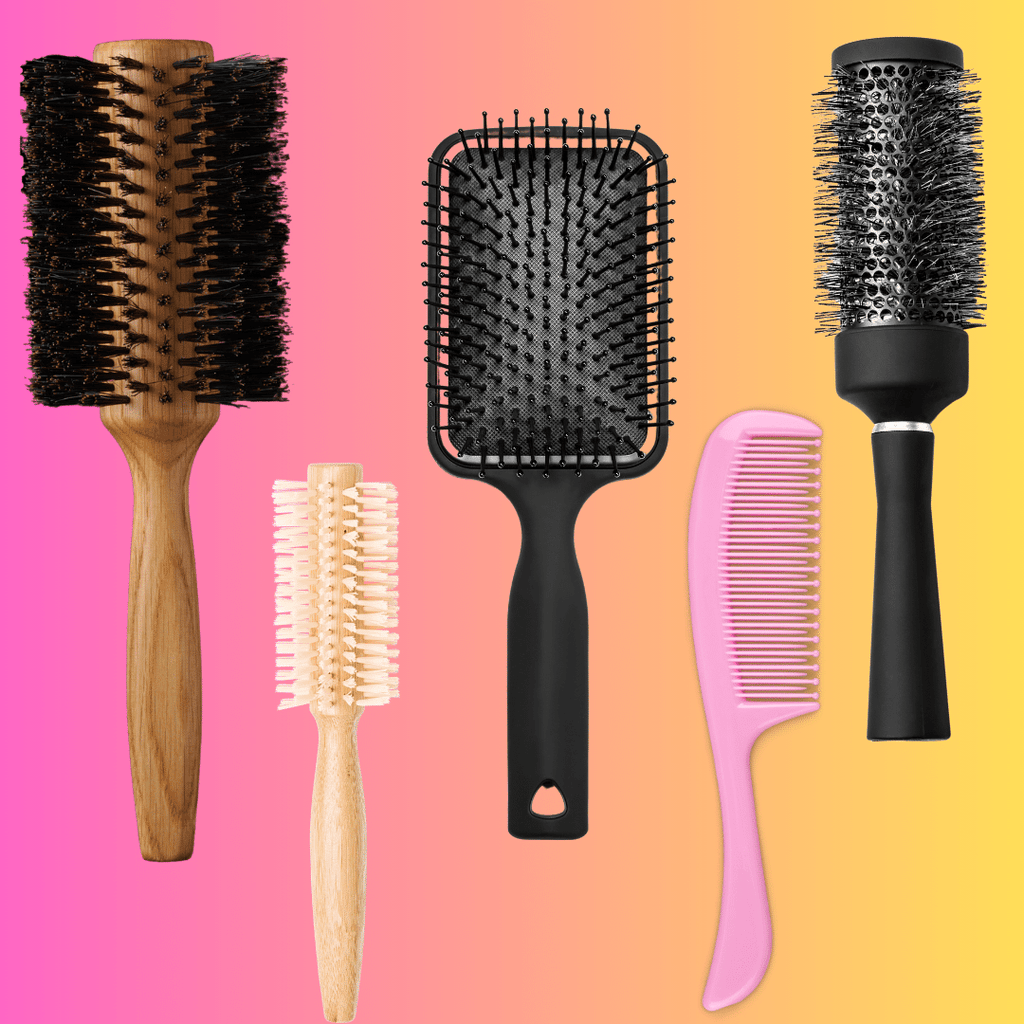Hairbrushes are essential tools in our hair care routine, but have you ever stopped to consider the cleanliness of your hairbrush? Do you ever notice a buildup of hair, dirt, dust, and product residue on your hairbrush, and always vow to clean it when you have a moment but don't get around to doing it?
Hairbrushes naturally accumulate dirt, oils, and residue from the scalp and hair products over time. That dust you see? It’s not dust, it’s actually dead skin cells. No matter how often you use your hairbrush, it has the ability to act like a sponge. Meaning, it can trap all sorts of residue in its bristles, both from your hair and from the environment. Using dirty hairbrushes can lead to scalp issues and dull, or fragile hair. On the other hand, clean hairbrushes can improve hair health and styling results.
Regularly cleaning your hairbrush is a crucial aspect of personal hygiene and hair care that is often overlooked.
Understanding the Impact of a Dirty Hairbrush:
Over time, dirt, oils, and product residue accumulate on hairbrushes, and only continue to build up. This buildup can lead to a range of negative consequences including increased hair breakage, scalp issues, and the spread of fungus and bacteria. By using a dirty hairbrush, you inadvertently transfer these contaminants back onto your hair and scalp, undermining your hair and scalp health. Essentially, you’re painting that dirt and oil back onto your clean hair.
Benefits of Regularly Cleaning Your Hairbrush:
Maintaining a clean hairbrush has numerous advantages. Firstly, it improves hair health by preventing product buildup, allowing your hair to appear cleaner and more voluminous. A clean hairbrush also promotes a healthier scalp by removing debris and preventing clogged pores, reducing the risk of dandruff. Furthermore, regularly cleaning your hairbrush ensures a more pleasant hair-styling experience, as the bristles will glide through your hair effortlessly, and stop snagging your hair.
How to Properly Clean Your Hairbrush:
Cleaning different types of hairbrushes requires specific techniques. For example, a paddle brush may require removing hair and gently scrubbing the bristles, while a round brush may benefit from soaking in a shampoo solution. It’s important to take into account, what material your brushes are made of. Let’s get into the detailed instructions on how to properly clean your hairbrushes.
Gather Your Supplies:
Before you begin cleaning your brushes, make sure you have the necessary supplies at hand. Remember, the goal is to thoroughly remove any debris, oils, and residue, so you may need the following:
- Wide-tooth comb
- Scissors (optional)
- Mild shampoo
- Hot water
- Towel
- Toothbrush or cleaning brush
- Cotton swabs
Prepare the Brush:
Start by removing any hair trapped in the bristles. Use a wide-tooth comb or your fingers to gently pull out the hair strands. If there are stubborn knots, you can use scissors to carefully cut through them, but be cautious not to damage the brush or yourself.
Soak the Brush:
Next, fill a basin or sink with hot water and add a small amount of mild shampoo. Swirl the brush around in the soapy water, ensuring that the bristles are fully submerged. Let the brush soak for a few minutes to loosen any grime or residue. If you have a wooden or bamboo brush, don’t soak it. Instead, briefly dip your brush up to the bristles-side down, in the water to clean but do not let it sit in the water.
Clean the Bristles:
After soaking, take a toothbrush or a small cleaning brush and gently scrub the bristles. Pay close attention to the base and the edges of the brush, as these areas tend to accumulate the most dirt and product buildup. Use back and forth motions and moderate pressure to effectively remove any remaining debris.
Rinse and Dry:
Once the bristles are clean, rinse the brush under warm running water to remove any leftover shampoo or dirt. You can use the cleaning brush to make sure all the suds are removed. Shake off any excess water and pat the brush dry with a towel. Avoid using high heat or placing it near a heat source, as this can damage the brush by warping the bristles, and let them air dry naturally. Paddle brushes can be dried face down, while round brushes should be rotated periodically as they dry.
Disinfect if Necessary:
If you're concerned about bacterial or fungal growth on your hairbrush, you can use a disinfectant. Dip a cotton swab in rubbing alcohol or an antiseptic product and gently rub it along the bristles and base of the brush. This step is optional but recommended for those with scalp issues or sensitive skin. This step should be done sparingly as a regular cleansing will prevent bacteria growth. If your brush is made of natural bristles, skip this step as it can dry out the natural bristles, ruining it in the long run.
How Often Should You Clean Your Hairbrush:
The ideal cleaning frequency for hairbrushes depends on various factors, including hair type, usage, and personal hygiene preferences. To keep your hairbrush clean and to prevent excessive buildup, make it a habit to clean it at least once a month. Regular maintenance will contribute to healthier hair and ensure that your brush remains in optimal condition. For those who regularly use their brushes should clean them once every 1-2 weeks.
To prolong the lifespan of your hairbrush, there are additional practices you can adopt. Storing your hairbrush properly in a clean and dry area, removing excessive product buildup, and regularly inspecting for damage are some examples.

